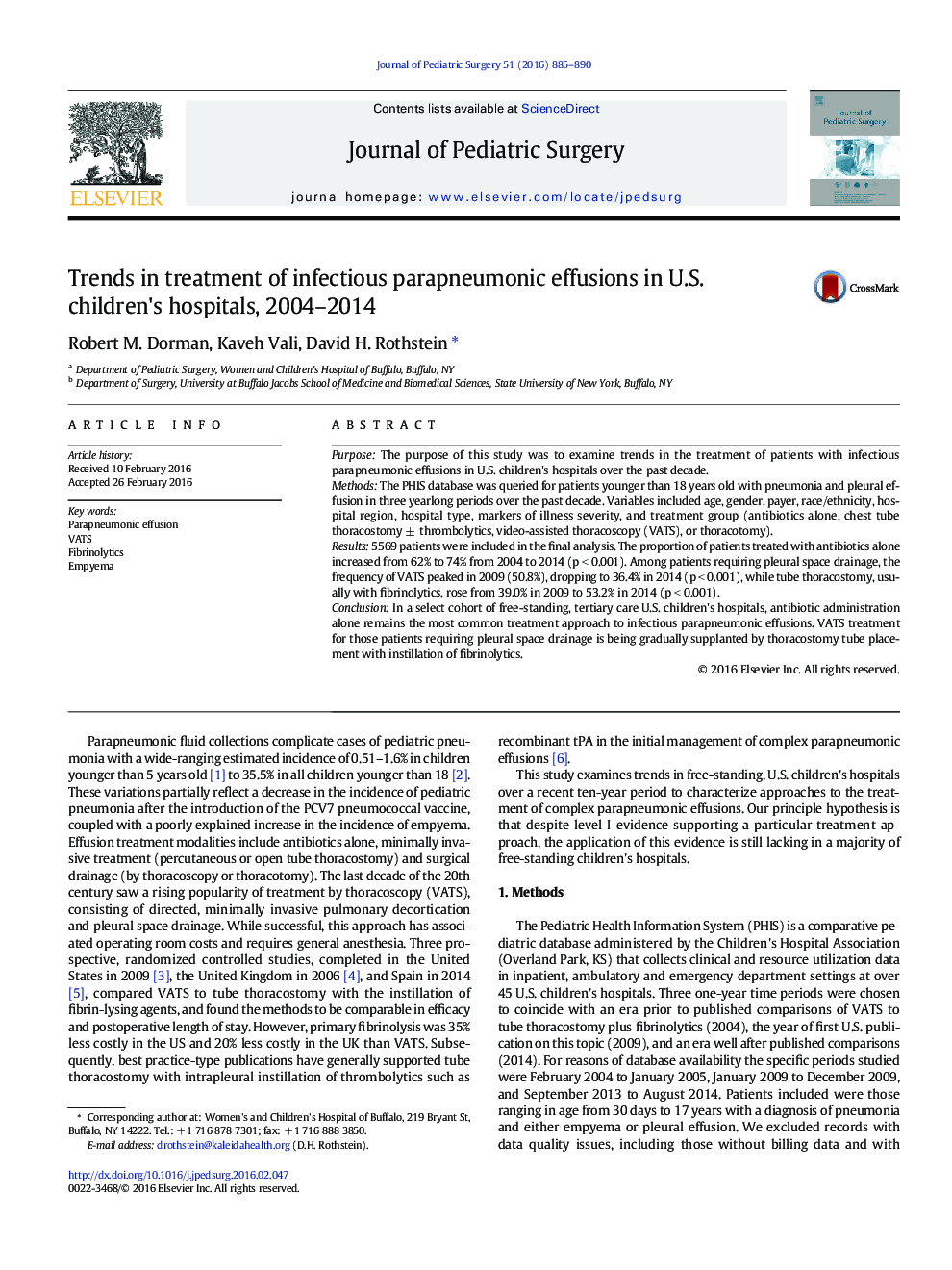| Article ID | Journal | Published Year | Pages | File Type |
|---|---|---|---|---|
| 4154899 | Journal of Pediatric Surgery | 2016 | 6 Pages |
PurposeThe purpose of this study was to examine trends in the treatment of patients with infectious parapneumonic effusions in U.S. children's hospitals over the past decade.MethodsThe PHIS database was queried for patients younger than 18 years old with pneumonia and pleural effusion in three yearlong periods over the past decade. Variables included age, gender, payer, race/ethnicity, hospital region, hospital type, markers of illness severity, and treatment group (antibiotics alone, chest tube thoracostomy ± thrombolytics, video-assisted thoracoscopy (VATS), or thoracotomy).Results5569 patients were included in the final analysis. The proportion of patients treated with antibiotics alone increased from 62% to 74% from 2004 to 2014 (p < 0.001). Among patients requiring pleural space drainage, the frequency of VATS peaked in 2009 (50.8%), dropping to 36.4% in 2014 (p < 0.001), while tube thoracostomy, usually with fibrinolytics, rose from 39.0% in 2009 to 53.2% in 2014 (p < 0.001).ConclusionIn a select cohort of free-standing, tertiary care U.S. children's hospitals, antibiotic administration alone remains the most common treatment approach to infectious parapneumonic effusions. VATS treatment for those patients requiring pleural space drainage is being gradually supplanted by thoracostomy tube placement with instillation of fibrinolytics.
